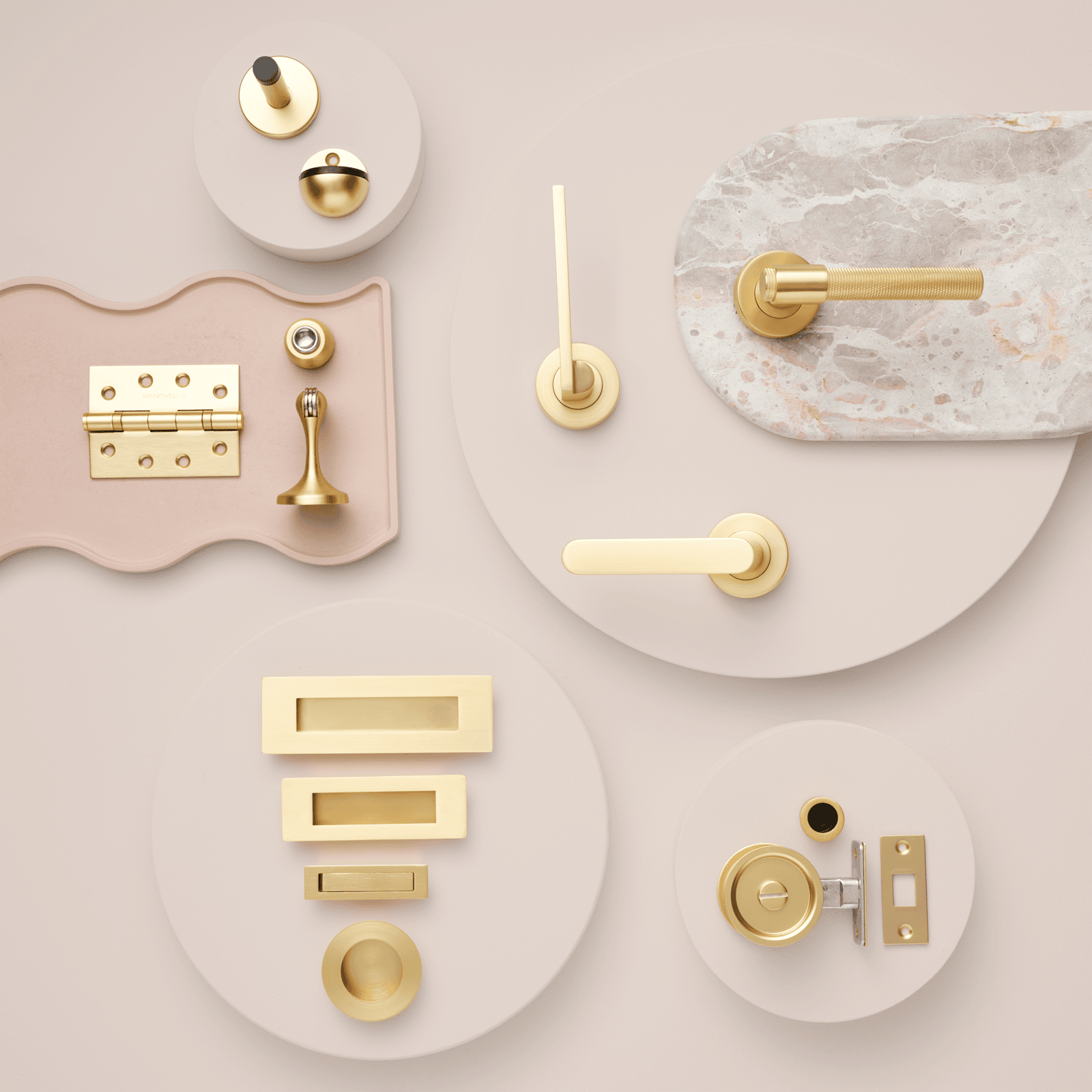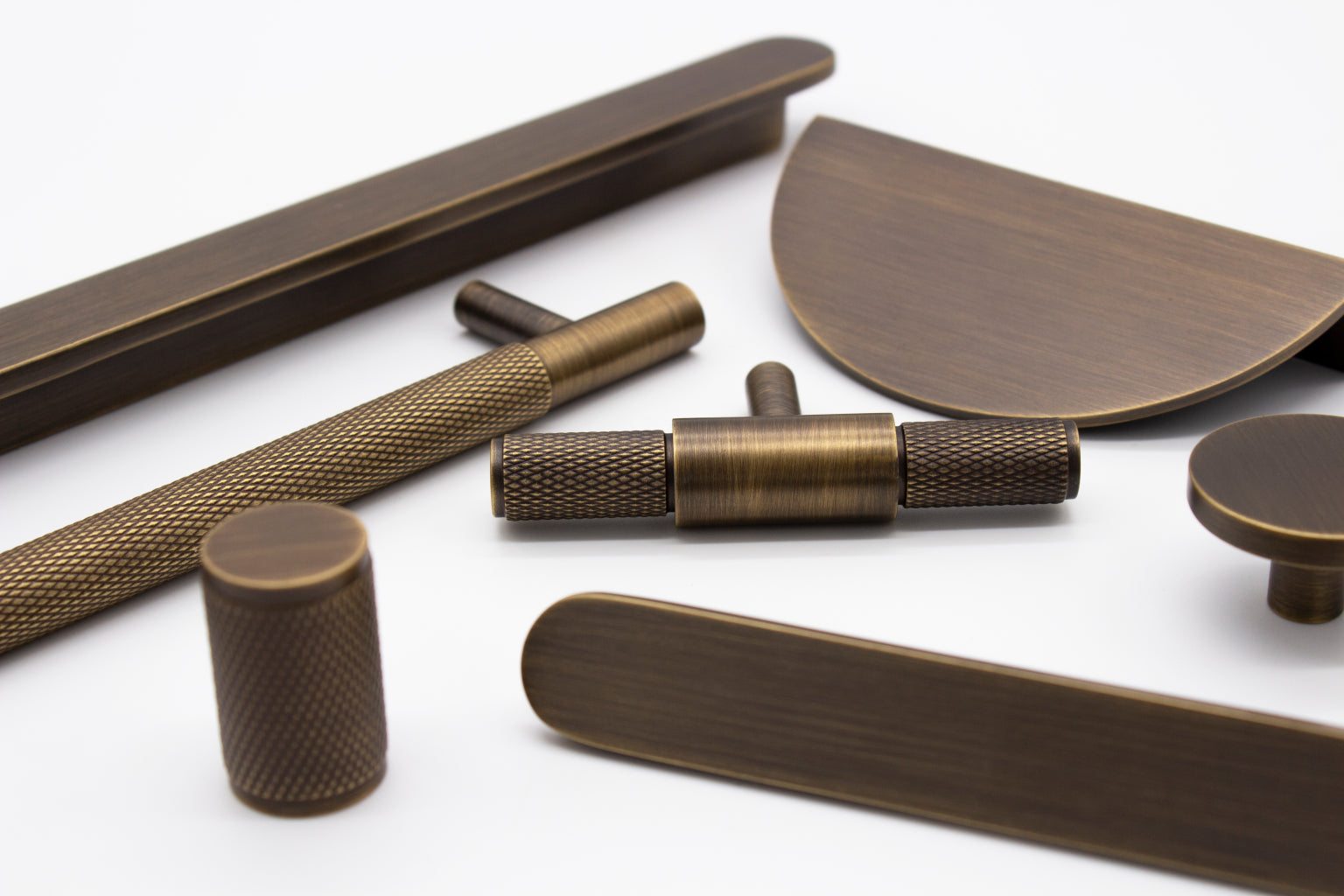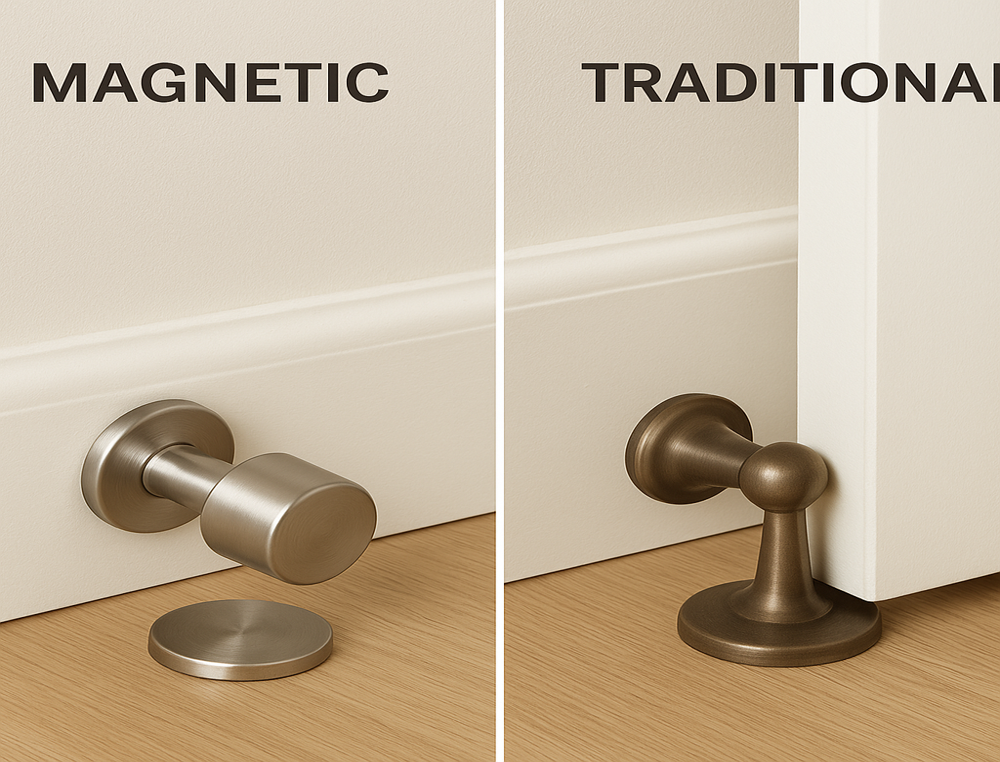Not much thought is given to the cleanliness of door handles.
But with so many hands touching them on a daily basis they can get a build-up of sweat, grime, dirt, dust and let’s face it, bacteria.
Ornate, antique, and vintage door handles do need a little more consideration when cleaning because they can often be made from particular materials that may not respond well to certain products.
Here are some tips for cleaning specific door handles made from common materials (this can also apply to hinges too)
Cleaning brass or copper vintage door handles
Brass and copper are common materials found in older-style door handles. They can be cleaned with common household products, but they are also susceptible to tarnishing. You need to first determine whether the material is coated with a protective lacquer before selecting your cleaning material.
Solid brass, steel, zinc-coated or iron door handles should be cleaned with warm, soapy water. Any rough abrasive cleaning will strip the top-coat off and ruin the surface. This is the same with any polishes used; it may strip off any brass plating (for example) and damage the integrity of the material, causing it to degrade over time.
If you are unsure, place a magnet on the door handle. If it doesn’t hold, then the material is brass-coated, and you should avoid anything abrasive to clean the surface.
A door handle with a clear coat that requires you to get through that to the material needs a solvent to remove the lacquer. Once that is done and the actual material has been cleaned, you can reapply the protective coating. A good indication of a door handle that has such a coating is a glossy or shiny appearance.
Cleaning stainless steel door handles
It is important to never use a bleach or anything abrasive, such as steel wool on a stainless-steel door handle. Do not use oven cleaners and try to avoid cleaning the materials when it is warm.
Warm soapy water and a soft cloth should be sufficient to clean a stainless-steel door handle. For stubborn grime, a mixture of olive oil and vinegar can gently lift the stain thanks to the slight acidity of the vinegar. Mix these in equal parts. Lemon juice mixed with soda water or even some lubricants can also shift those grimy stains.
Cleaning Sterling Silver and Silver Plated Knobs and Hardware
Silver is one of the most susceptible materials to becoming tarnished over time. Tarnished silver has a dirty-green hue to it which can rub off onto skin. A great way to clean tarnished silver is to combine baking soda and boiling water in an aluminium dish (make sure it is deep enough) and let the chemical reaction do the rest. The tarnish should simply dissolve. Once the metal has cooled, simply give it a quick once-over with a non-abrasive cloth and it should return to a lovely, polished shine.
Cleaning Pewter Door Handles
Pewter is an alloy consisting of tin and copper. Both metals are susceptible to tarnish over time. Cleaning pewter – it sounds like an old wives tale – can be done by rubbing cabbage leaves over the affected surface area. Once the grime has been removed or loosened give it a good polish with a non-abrasive cloth to remove the rest.
Cleaning Glass or Crystal Door Handles
Glass and crystal are a little bit more resistant than metals, and a glass-cleaner is sufficient to bring them back to their former glory. Avoid using any hard-core cleaning products that have solvents in them as they can seep into the material and degrade it over time. A good glass cleaner with a microfibre cloth will make your glass and crystal handles sparkle again.











